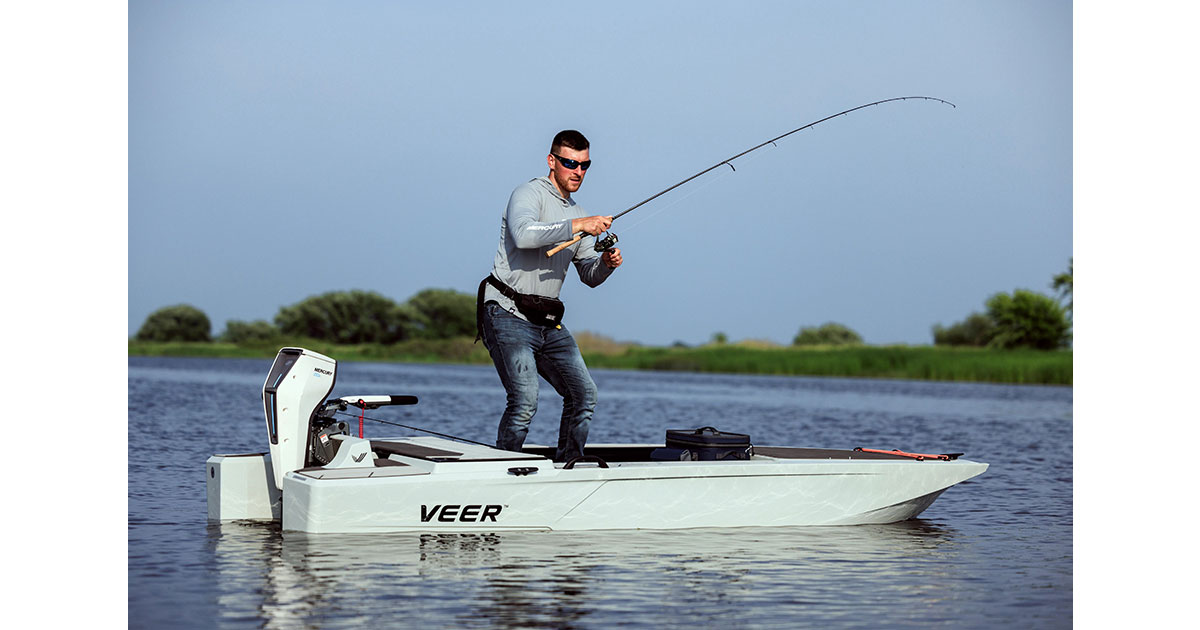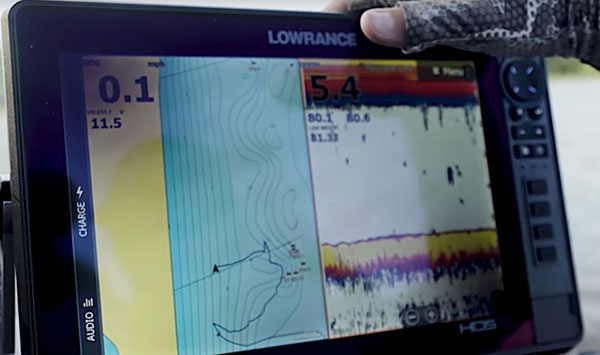- Details
Mercury Report
 Avator™ 20e and 35e electric propulsion systems
Avator™ 20e and 35e electric propulsion systems
Mercury Marine introduced the Avator™ 20e and 35e electric propulsion systems.
The new models join Mercury’s electric propulsion lineup alongside the award-winning Avator 7.5e outboard, which launched at the Consumer Electronics Show (CES) in January. Two more electric outboard products will be unveiled in the coming months as Mercury advances on its commitment to be the leader in electric propulsion.
“We’re thrilled to advance our electrification strategy and the Mercury Avator brand with the introduction of the 20e and 35e electric outboards,” said John Buelow, Mercury Marine president. “Building off the success of the Avator 7.5e, these outboards set new benchmarks for innovation, performance, and connectivity. The investment and advancements we’re making position Mercury to continue expanding our Avator portfolio and soon deliver additional industry-changing, low-voltage electric outboards.”
The 20e and 35e feature many of the same innovative features as the 7.5e, including industry-first transverse flux motor technology, a vivid full-color intuitive display and an ambidextrous tiller handle. The new models offer more power and the ability to connect multiple Avator batteries to extend range and run time, plus full access to the Mercury Marine app with the integrated SmartCraft® Connect module.
The Avator 20e and 35e outboards generate 2200W and 3700W of power, respectively, at the propeller shaft. The 20e can produce similar acceleration as a 5hp FourStroke outboard, while the 35e generates acceleration that is comparable to a Mercury 9.9hp FourStroke outboard. Offered with tiller or remote steering, both are ideal for powering small vessels, including aluminum fishing boats, micro skiffs, rigid inflatables, tenders, and small pontoons.
“Avator outboards are intelligent, electric propulsion systems engineered to deliver a superior boating experience with flexibility to easily extend range and runtime,” said Tim Reid, Mercury Marine vice president of product development and engineering. “Up to four of Mercury’s new 2300Wh batteries can be connected and managed through our exclusive Power Center which safely merges power, enables communication between the batteries and outboard, and allows single point charging.”
Batteries and Chargers
The Avator 20e and 35e 2300Wh lithium-ion battery was developed in partnership with the Navico Group’s Mastervolt brand and engineered exclusively for marine applications. It's a safe, reliable power source that's been drop-tested and IP67 rated for water resistance.
Boaters can choose to connect directly to one 2300Wh battery for peak simplicity and portability or extend their range and runtime by adding an Avator Power Center and connecting up to four batteries. The Power Center serves as a central hub for power cable connections, allowing for a clean and organized boat installation. Power cable connections to the battery are fast and easy with the toolless, twist-lock connector.
Avator smart chargers constantly monitor voltage and current to deliver a safe, effective charge and can shut down to protect the battery if there is an issue. The 230W Avator charger can recharge a fully depleted 2300Wh battery in approximately 10 hours. A higher speed 520W charger is available and can cut the charge time by more than 50%.
Motor and Performance
Avator’s industry-first transverse flux motor technology delivers reliable, quiet power. The Avator 35e electric outboard is 63% quieter than a 6hp four-stroke outboard at full throttle. The motor generates high torque with little effort, maximizing battery life and range while contributing to faster acceleration and more efficient overall performance than similar competitive products.
Avator props are crafted of a high-strength, impact-resistant composite material. Their three-blade design maximizes thrust for peak battery life with minimal noise.
Remote Controls
- Details
BoatUS Report
 Gas Recommendations for Boaters
Gas Recommendations for Boaters
Today’s gas station pumps no longer provide clear and transparent information to help consumers make the right fuel choice. Dispensing pumps have become a marketer’s dream, chock full of attention-grabbing video screens blasting amplified sound that visually plaster a captive audience with a mishmash of eye-catching advertisements from two-for-one coffee to $1 hot dogs.
With all that distraction and summer boating season kicking off this Memorial Day weekend, Boat Owners Association of The United States wants to remind boaters that it may take a little more effort to ensure the right fuel goes into the tank. The key to that is knowing that recreational boats are not approved for gasoline blends containing more than 10% ethanol (E10) – and a little orange warning sticker may be the best indicator on the pump to help make the right fuel choice.
“Fuel is a significant part of a boater’s budget, so finding savings is important,” said BoatUS manager of Government Affairs David Kennedy. “However, fuel retailers market E15 (15% ethanol) fuel, such as ‘regular 88’ or ‘unleaded 88’ as a lower cost alternative to E10.”
- Details
Mercury Report
Mercury Marine, a division of Brunswick Corporation (NYSE: BC), today announced a promotion offering five years of factory-backed coverage with the purchase of a new 2.5-400hp outboard.
From May 22, 2023, through July 31, 2023, Mercury is offering the standard 3-year limited warranty plus two years of additional factory-backed Mercury Product Protection (MPP) Gold coverage with the purchase of a new Mercury 2.5-400hp outboard from a participating Mercury Authorized Dealer.
As a bonus, with the purchase of a new Mercury L6 350 or 400hp Verado® outboard during the offer period, consumers will receive two additional years of MPP Gold coverage – for seven total years of coverage.
Outboards must be registered by Aug. 15, 2023, to receive the additional coverage. Offer valid in U.S. only. Additional exclusions apply. Contact a participating Mercury Authorized Dealer or visit MercuryMarine.com/Get5 to get the full details.
- Details
Mercury Report
 Sonar Settings
Sonar Settings
Electronics are crucial components to an angler’s success, and they also can serve as practical navigation tools. While “electronics” is a broad term that can mean many different things, the most common form is sonar. Sonar is a system that detects objects under the water by emitting sound pulses. Once these pulses hit an object and are reflected back, the unit takes this data and converts the time between when each pulse was emitted and when it returns into distance, displaying a 2D picture of the world below. The sound pulses derive from a transducer, a puck-shaped object, usually affixed to the boat’s transom. A properly working transducer will make soft clicking noises as it transmits.
Most anglers navigate with a split-screen setting on their display – mapping on one side and sonar on the other. Using GPS, the mapping view allows for a broader positional perspective and the ability to track to specific waypoints. The 2D sonar view is a more precise reading of what is directly under the boat.
Modern sonar units are so advanced that running them on their default settings can provide most of the information anglers need, though in many cases, it’s helpful to make some adjustments based on where and how you fish.
Sensitivity
Perhaps the most important sonar setting is sensitivity. Sensitivity is the sonar’s ability to read sound pulses. An increase in sensitivity allows an angler to see smaller objects and weaker 2D sonar returns, but the downside is that the display will show more clutter. Most anglers seek a balance, desiring both a strong, but clean view. In dirty water or situations with heavy algae, it’s prudent to slightly reduce the sensitivity.
“If you’re in 20 feet or less, you never need to add sensitivity, and in fact, you should reduce it some,” said Mercury Pro Team member Korey Sprengel, a professional walleye angler and one of the hosts of “The Next Bite” TV show. “Dialing it back just helps clean the picture up, allowing you to interpret it better. When I start to add sensitivity is in that 50-foot-plus range. Let’s say if I’m salmon fishing in 150 to 200 feet, that’s where it really helps me pick up more fish down in the depths. Without the additional sensitivity, it will mark them faintly.”
Frequency
Another important sonar setting is frequency. Many sonar manufacturers use transducers capable of 83 and 200 kilohertz. Kilohertz is a measure of frequency equivalent to 1,000 cycles per second. Anglers can set their units to operate on either 83kHz or 200kHz. It’s also possible to run both 83kHz and 200kHz together, known as dual beam or dual frequency.
- Details
Mercury Report
When you are shopping for a new product that incorporates sophisticated technology, whether it is as big as a pickup truck or as small as a fitness watch, it’s important to check the warranty terms prior to purchase. Today’s advanced outboard, sterndrive and inboard engines are no exception.
Most high-tech items come with a limited warranty that covers their components against any failures resulting from defects in the materials they are made from or the manufacturer’s workmanship for a specified length of time. These warranties are called “limited” because any product failures that are due to abuse, neglect, lack of maintenance or using the product in a way the manufacturer did not intend are not covered by the warranty and are the responsibility of the owner.
A typical length of time for a limited warranty is one year from the date of purchase. Mercury Marine offers a three-year limited warranty for recreational users on most of its outboard, sterndrive and diesel engines. This shows the confidence Mercury has in the quality of its products and in its manufacturing processes. At Mercury Marine, every engine is operated and tested before it is boxed for shipment to make sure it is ready for use.
When you are shopping for a new marine engine, it is important to keep in mind that its limited warranty is only in force once the engine is properly registered with the manufacturer. Most factory-authorized boat and engine dealers will take care of registering outboards, sterndrives and inboard engines for their customers upon purchase.
The Mercury Limited Warranty gives you access to Mercury’s vast network of more than 3,600 authorized dealers and service providers in the United States and Canada. They take care of any warranty claims quickly and conveniently for Mercury customers.




